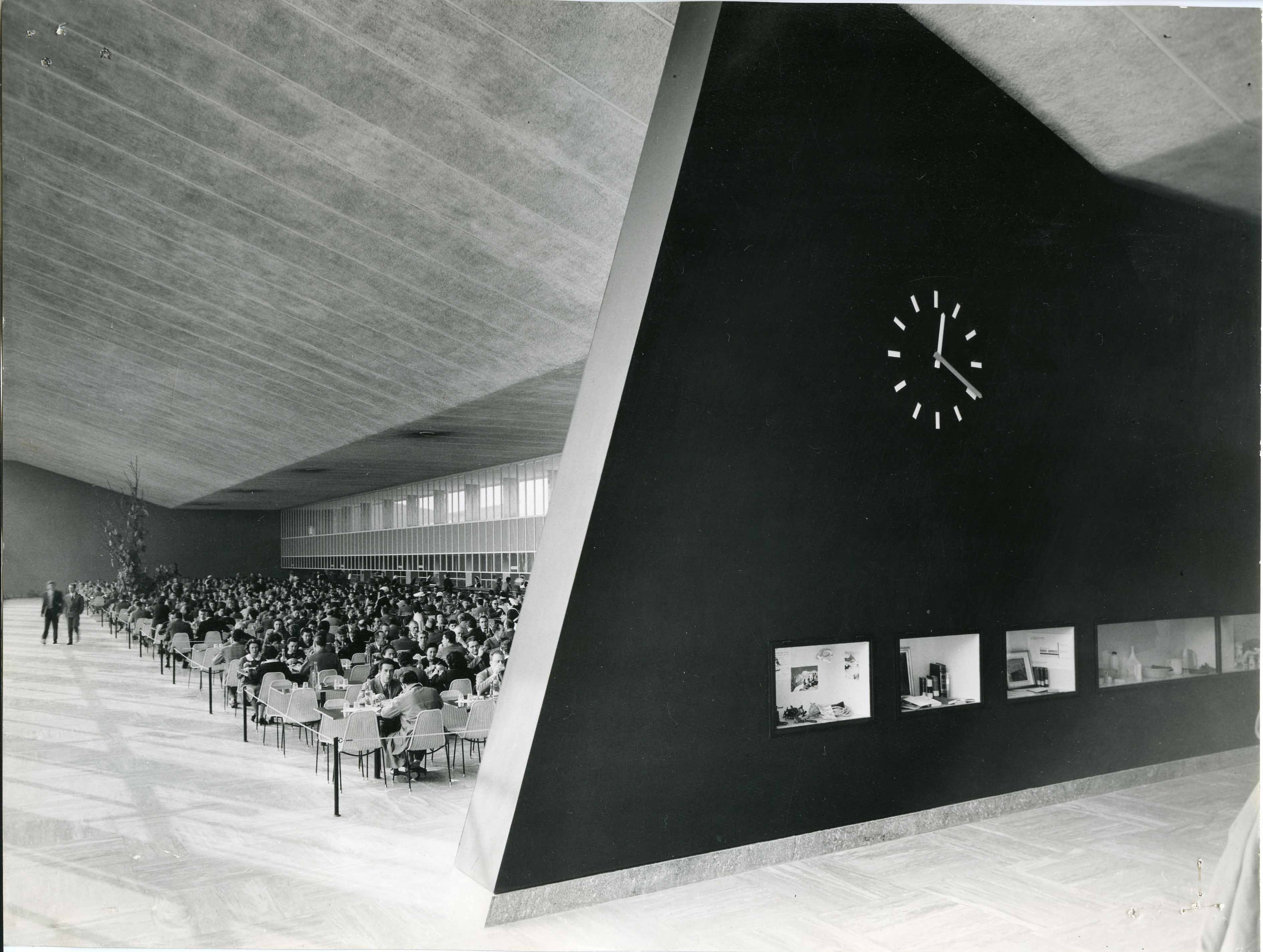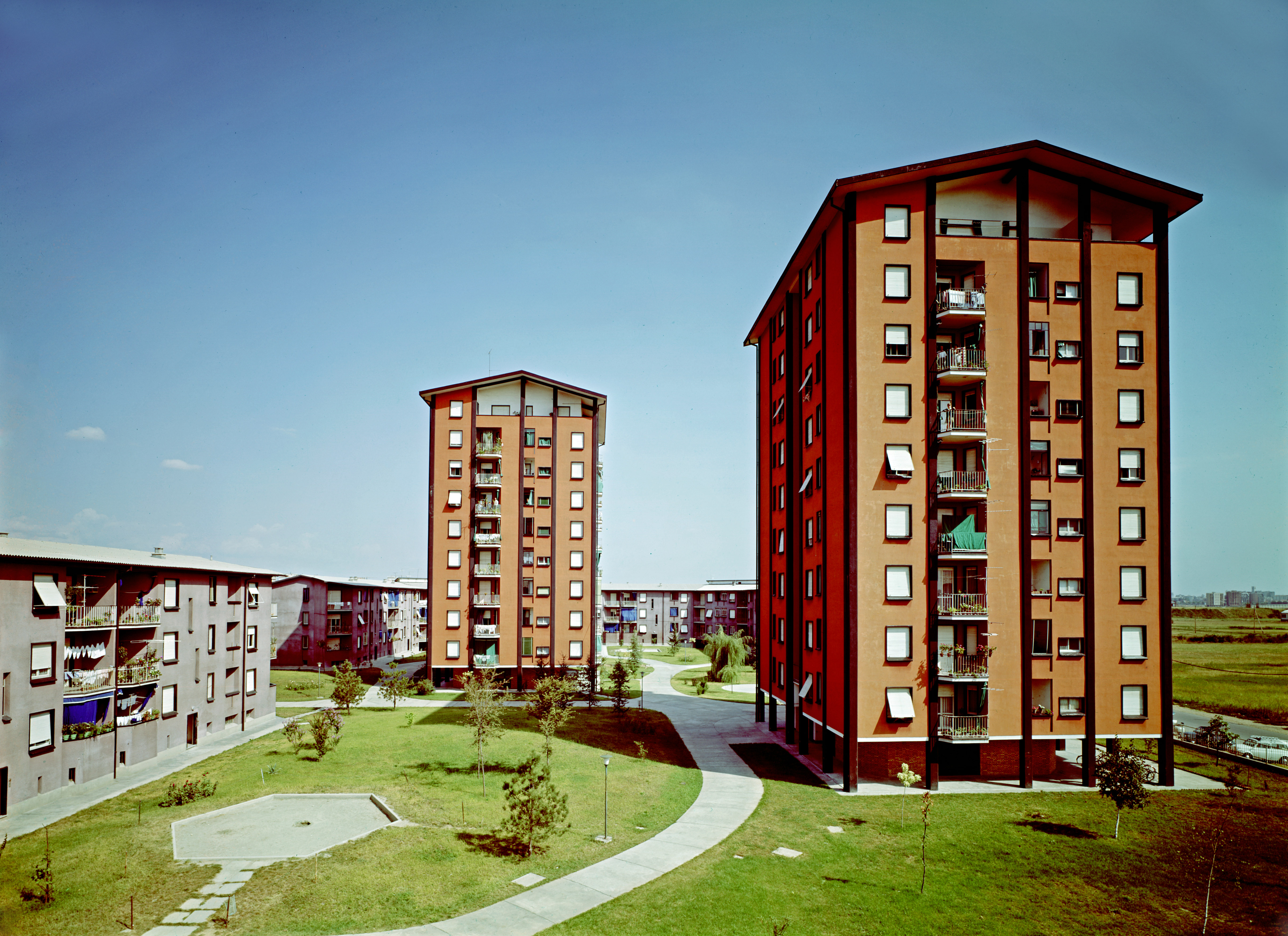New Features on the Online Historical Archive: Pictures of Pirelli Corporate Welfare from the Post-war Period to the Early 1970s
“Entering the vast, tidy halls of the Bicocca canteens and visiting their annexed services; taking note of the organisation of the outlets and dining halls; becoming acquainted with the workings of the medical service and the infirmaries, with their modern equipment; visiting the kindergartens, nursing homes, apprenticeship workshops and so on; all this gives grounds for great satisfaction for what has already been accomplished and it also spurs us to do even more.”
This is how, in his 1946 book, La Pirelli. Vita di un’azienda industriale, Alberto Pirelli looked back over what the company had achieved in terms of what we would now call “corporate welfare”, to which his father Giovanni Battista, who had founded the company, had devoted himself right from the outset. A few years after the company was set up, Pirelli well understood the importance of investing in forms of social security and assistance and he launched cutting-edge projects, such as the creation, in 1877, of a “welfare fund” which provided grants in the event of illness. This was one of the first examples of assistance to workers to be introduced by a large company. And in 1926 a healthcare service was set up for employees and their families, providing specialist advice, laboratory tests, home care and notable facilities for admission to hospitals and nursing homes. As the company grew, ever greater assistance was provided to the workers, covering not just healthcare issues but also services for the family and for leisure and sport.
New materials illustrating these services, dating from the post-war period to the early 1970s, are now available in the online Historical Archive, with many photographs from the archives of the Pirelli “Direzione Propaganda”. These were mainly used to inform employees, as well as the wider public through company magazines, about the welfare services provided by the company. For example, the photographs show the canteen service at the Bicocca factory: one for the blue-collar workers, photographed after it was refurbished in 1955, and the staff canteen designed by the architect Giulio Minoletti and the engineer Giuseppe Chiodi, with its construction phases, its ultra-modern interiors, and its dining hall with 770 seats. And there were services to assist families, from childcare (with kindergartens, after-school child services, and summer camps – the first of which opened in Pietra Ligure in 1947 – and the Piero Pirelli Institute, which opened in 1958 as a professional training centre for the children of employees) through to care for the elderly, with a retirement home in Induno Olona, in the province of Varese. The pictures also document the work carried out by the company in the field of healthcare, with the surgery and the psychotechnical laboratory, which was set up in 1935 to perform tests and examinations for the selection of personnel and accident prevention. And then there was housing for employees, with the village in Cinisello Balsamo, which was built in 1953 as part of the INA-Casa construction plan.
A sizeable collection of photographs documents the activities of the Pirelli Sports Group, which was set up in 1922 with the aim of promoting sports among the workers and their families. In the 1970s it was divided into 18 sections, one for each sport, with more than 2,500 signed-up members who trained in the sports facilities opposite the factory. Some of the photographs are signed by such great names as Vincenzo Aragozzini, Aldo Ballo, Ugo Mulas, and Enzo Nocera.
Coming back to the words of Alberto Pirelli: “So we were born and raised among workers, machines and company developments, and we soon learnt to love our jobs, the workers, and this company, which was part of the best years of our life.”


“Entering the vast, tidy halls of the Bicocca canteens and visiting their annexed services; taking note of the organisation of the outlets and dining halls; becoming acquainted with the workings of the medical service and the infirmaries, with their modern equipment; visiting the kindergartens, nursing homes, apprenticeship workshops and so on; all this gives grounds for great satisfaction for what has already been accomplished and it also spurs us to do even more.”
This is how, in his 1946 book, La Pirelli. Vita di un’azienda industriale, Alberto Pirelli looked back over what the company had achieved in terms of what we would now call “corporate welfare”, to which his father Giovanni Battista, who had founded the company, had devoted himself right from the outset. A few years after the company was set up, Pirelli well understood the importance of investing in forms of social security and assistance and he launched cutting-edge projects, such as the creation, in 1877, of a “welfare fund” which provided grants in the event of illness. This was one of the first examples of assistance to workers to be introduced by a large company. And in 1926 a healthcare service was set up for employees and their families, providing specialist advice, laboratory tests, home care and notable facilities for admission to hospitals and nursing homes. As the company grew, ever greater assistance was provided to the workers, covering not just healthcare issues but also services for the family and for leisure and sport.
New materials illustrating these services, dating from the post-war period to the early 1970s, are now available in the online Historical Archive, with many photographs from the archives of the Pirelli “Direzione Propaganda”. These were mainly used to inform employees, as well as the wider public through company magazines, about the welfare services provided by the company. For example, the photographs show the canteen service at the Bicocca factory: one for the blue-collar workers, photographed after it was refurbished in 1955, and the staff canteen designed by the architect Giulio Minoletti and the engineer Giuseppe Chiodi, with its construction phases, its ultra-modern interiors, and its dining hall with 770 seats. And there were services to assist families, from childcare (with kindergartens, after-school child services, and summer camps – the first of which opened in Pietra Ligure in 1947 – and the Piero Pirelli Institute, which opened in 1958 as a professional training centre for the children of employees) through to care for the elderly, with a retirement home in Induno Olona, in the province of Varese. The pictures also document the work carried out by the company in the field of healthcare, with the surgery and the psychotechnical laboratory, which was set up in 1935 to perform tests and examinations for the selection of personnel and accident prevention. And then there was housing for employees, with the village in Cinisello Balsamo, which was built in 1953 as part of the INA-Casa construction plan.
A sizeable collection of photographs documents the activities of the Pirelli Sports Group, which was set up in 1922 with the aim of promoting sports among the workers and their families. In the 1970s it was divided into 18 sections, one for each sport, with more than 2,500 signed-up members who trained in the sports facilities opposite the factory. Some of the photographs are signed by such great names as Vincenzo Aragozzini, Aldo Ballo, Ugo Mulas, and Enzo Nocera.
Coming back to the words of Alberto Pirelli: “So we were born and raised among workers, machines and company developments, and we soon learnt to love our jobs, the workers, and this company, which was part of the best years of our life.”




